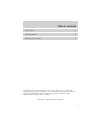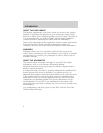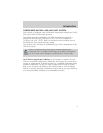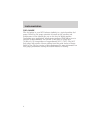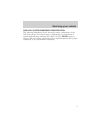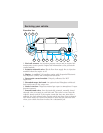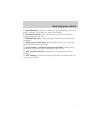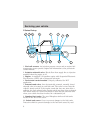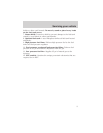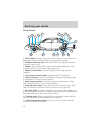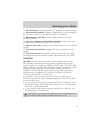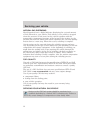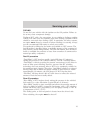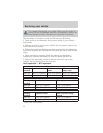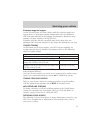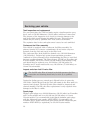
NATURAL GAS DISPENSING
Most dispensers have a digital indicator displaying the cost and amount
of fuel delivered to your vehicle. Fuel delivery to the vehicle is stopped
when the pressure of fuel stored on the vehicle equalizes with the
temperature compensated pressure of fuel stored at the station. As the
pressure between the station and vehicle equalizes, the cost and quantity
meters slow to a near stop. When this occurs, refueling is complete.
Certain noises can be expected during the refueling process and may
vary depending on the type of fuel station and your proximity to the fuel
compression and storage equipment. At the beginning of refueling you
might hear the rushing noise of gas entering the vehicle through the
station hose and tubing. At the end of refueling, the fuel receptacle on
the vehicle may make a high pitch noise or chatter. This is another
indication that refueling is nearly complete. Also, the station compression
equipment may turn on at any time during the refueling process.
FUEL QUALITY
Use only a CNG fuel that meets the specification of NFPA-52 and SAE
J1616 in your NGV. Specifications NFPA-52 and SAE J1616 place limits
on particulate contamination and moisture content to ensure a quality
CNG fuel.
The use of a CNG fuel that does not meet specifications NFPA-52 and
SAE J1616 is not recommended and may cause engine damage.
Use of poor quality CNG fuel may result in:
• component failure.
• leakage from the fueling point.
• poor vehicle operation.
Use of poor quality fuel may also result in your warranty being
invalidated.
SERVICING YOUR NATURAL GAS VEHICLE
Service to the CNG fuel system should be conducted at a
qualified dealership by a trained NGV technician only. Failure to
do so may cause damage to components or cause bodily harm.
Servicing your vehicle
12



